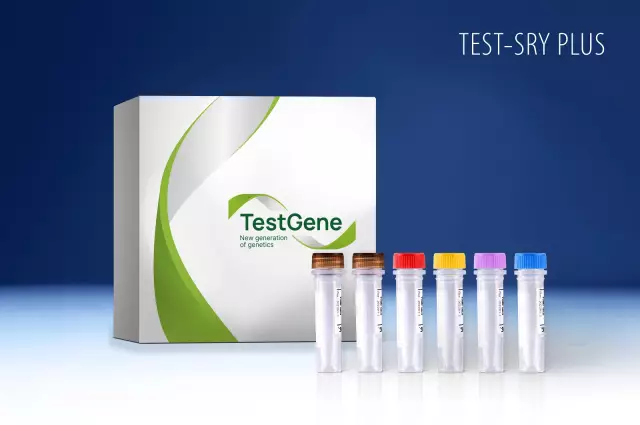- Author Rachel Wainwright [email protected].
- Public 2023-12-15 07:39.
- Last modified 2025-11-02 20:14.
Prenatal diagnosis

Prenatal diagnosis is a complex of prenatal examination. The main goal, in this case, is to identify various pathologies at the stage of intrauterine development of a child.
What is prenatal diagnosis used for?
Thanks to the prenatal diagnosis of hereditary diseases, the following disorders can be found in the fetus:
- Down syndrome;
- Edwards syndrome;
- Disturbances in the development of the heart, etc.
It is the prenatal diagnosis of hereditary diseases that plays a decisive role in the fate of the unborn child. Based on the data obtained, the parents, together with the doctor, decide whether the pregnancy will be terminated or not. With a favorable prognosis of doctors, rehabilitation of the unborn child can be carried out.
Prenatal diagnostics is also the determination of paternity based on the data of genetic examination carried out in the early stages of pregnancy, and determination of the sex of the child.
Basic methods of prenatal diagnosis

In modern conditions, various technologies are used in prenatal diagnostics. They have different degrees of reliability and levels of capability.
There are two main groups of prenatal diagnostics:
1. Non-invasive;
2. Invasive.
Non-invasive methods, or they are also called minimally invasive, do not involve surgical intervention and injury to the mother and fetus. Such procedures are not dangerous, and they can be recommended to all pregnant women, without exception.
Invasive prenatal diagnostics involves surgical intervention (invasion) into a woman's body (her uterine cavity).
Invasive prenatal diagnosis is unsafe for the mother and fetus, therefore, it is prescribed by doctors only in extreme cases, when there are serious concerns for the health of the unborn child.
Scheduled ultrasound of a pregnant woman must be visited, this will exclude or, conversely, confirm the need for invasive prenatal diagnosis.
Procedures related to non-invasive prenatal diagnosis
Non-invasive prenatal diagnostic methods include the following:
- Ultrasound prenatal screening (monitoring the dynamics of fetal development);
- Prenatal screening of maternal serum factors.
Prenatal screening is nothing more than a routine ultrasound scan shown to all pregnant women. The following periods of pregnancy are mandatory periods for undergoing an ultrasound scan:
1.111 - 13 weeks;
2. 22 - 25 weeks.
Prenatal screening provides for the diagnosis of the condition of the fetus and the mother's body. The sensor (transducer) is installed on the surface of the woman's abdomen and emits sound waves. These waves are captured by the sensor, transferring them to the monitor screen. In early pregnancy, another type of prenatal ultrasound screening may be used. This is a transvaginal method in which a transducer is inserted into the vagina of a pregnant woman.
Prenatal screening makes it possible to determine a number of abnormalities in the development of the fetus at different stages of pregnancy:
1. Congenital defects of the heart, kidneys, liver, intestines, limbs, etc.;
2. Signs of Down syndrome - up to 12 weeks gestation.
In addition, prenatal ultrasound screening determines the development of the pregnancy itself:
- Uterine or ectopic;
- The number of fetuses in the uterus;
- Fetal age (gestational age);
- Fetal position (breech or cephalic presentation);
- Delay in fetal development;
- Palpitations (his character);
- Child gender;
- The condition and location of the placenta;
- Assessment of amniotic fluid;
- The state of blood flow in the vessels of the placenta;
- Uterine tone.
Thus, prenatal screening helps to find out if the pregnancy is going well. For example, having determined the state of the tone of the uterine muscles, you can establish the threat of termination of pregnancy (miscarriage) and take urgent measures to eliminate this problem.
Prenatal screening for maternal serum factors involves the study of blood taken from a vein of a pregnant woman. The best period for analysis is the period from the 15th to the 20th week of pregnancy.
A woman's blood serum is examined for the content of certain substances in it:
- Alpha-fetoprotein (AFP);
- Unconjugated estriol (NE);
- Chorionic gonadotropin (CG).
This method of prenatal screening is highly accurate. But, in some cases, tests can give false positive or false negative answers. Then additional procedures are prescribed for the prenatal diagnosis of hereditary diseases. This can be prenatal screening (ultrasound) or a variety of invasive prenatal diagnostics.
Procedures Related to Invasive Prenatal Diagnosis
For prenatal diagnosis of hereditary diseases and other disorders in the development of the fetus, in case of a decision to use invasive methods of prenatal diagnosis, the following procedures are used:
- Cordocentesis (taking a sample and examining the umbilical cord blood);
- Chorionic biopsy (study of the composition of cells that are the basis for the formation of the placenta);
- Amniocentesis (taking and examining the mother's amniotic fluid);
- Placentocentesis (identification of the negative consequences of an infection transferred during pregnancy).
The advantages of invasive prenatal diagnostics are 100% guarantee of the result and its speed. In addition, invasive prenatal diagnostics can be used very early in pregnancy.
Thus, if there is a suspicion of any deviation in the development of pregnancy and the health of the child, thanks to the method of prenatal diagnosis of hereditary diseases, accurate conclusions can be drawn. Therefore, doctors and parents are given a real opportunity to make a specific decision in further actions:
1. Leave the child;
2. Have an abortion.
When parents decide, despite the pathology, to leave pregnancy, thanks to early prenatal diagnosis of hereditary diseases, doctors have time at the disposal of the doctors for the maximum possible correction of pregnancy and treatment of the fetus inside the womb.
If we are talking about termination of pregnancy, this procedure is morally and physically tolerated more easily at an early stage, at which developmental abnormalities were detected.
Found a mistake in the text? Select it and press Ctrl + Enter.






